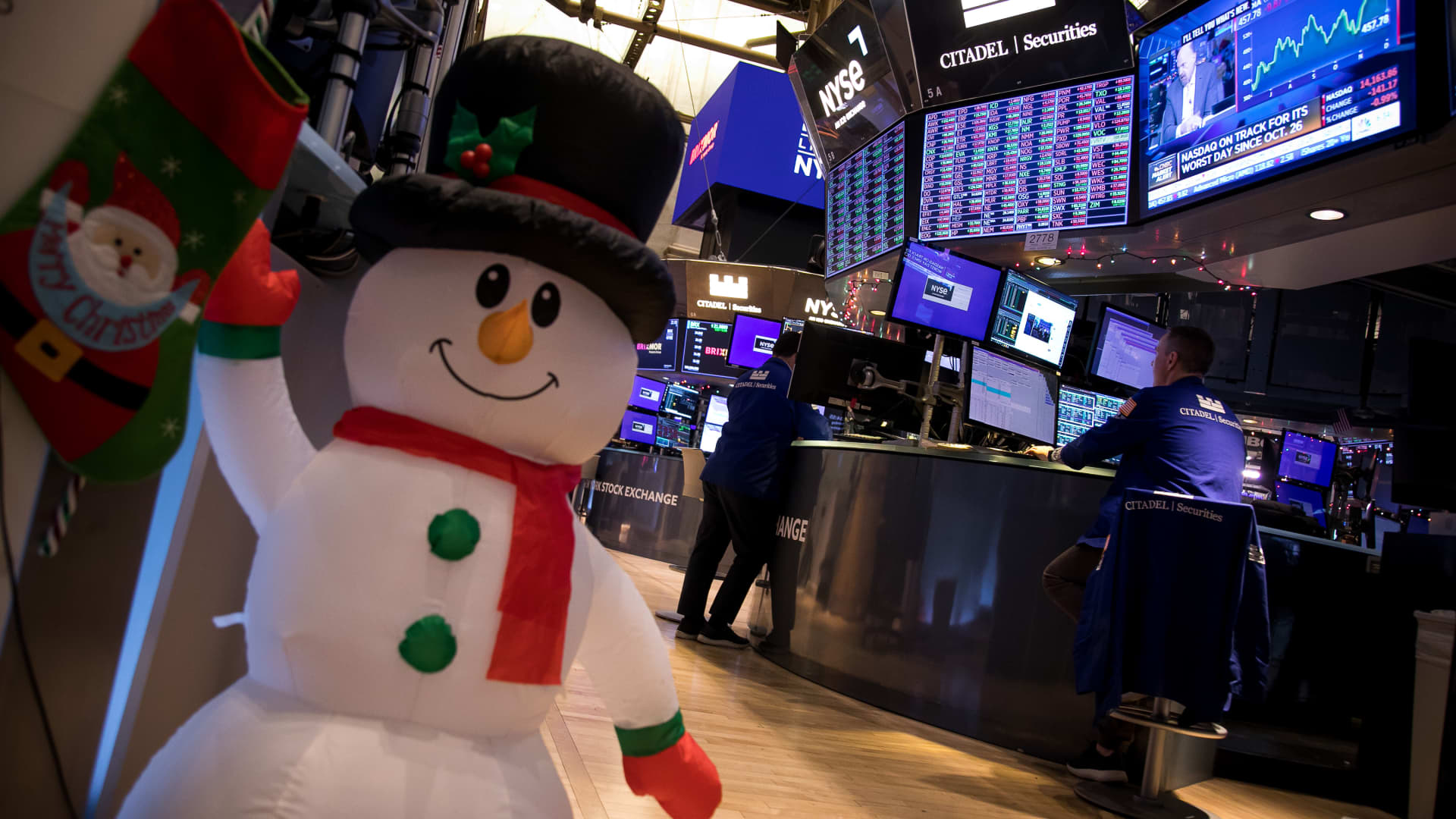
The recent shift in outlook by the Federal Reserve has created a new investing environment that could be key for portfolio changes heading into 2024. On Wednesday, the central bank’s updated projections showed three rate cuts in 2024. That report strengthened the idea that markets are in the midst of a shift to a new environment, according to John Davi, the founder of Astoria Portfolio Advisors. Davi’s firm helps financial advisors put together portfolios using ETFs. He recently released a list of funds to own to own for 2024, and the group shows a bet on a broad equity rally over the next year. “There’s one portfolio to own when the Fed is hiking rates, and there’s a different portfolio to own when the Fed is cutting rates,” Davi told CNBC. “When the Fed cuts, they’re trying to stimulate the economy, and I think you want to own more cyclical growth sectors and themes,” he added. Two ways to play that idea on Davi’s list are Invesco’s equal weighted sector funds for industrials ( RSPN ) and energy ( RSPG ). Those funds would benefit from an economic environment that is broadly positive and doesn’t just see a few major players expand their business. “We’re very much into this de-globalization theme, so that would bode well for the industrials and materials sectors,” Davi said. For investors looking for a core holding instead of betting on a specific sector, Davi also highlighted the Invesco S & P 500 GARP ETF (SPGP) . GARP stands for “growth at a reasonable price,” an investing strategy that tries to straddle the line between stocks with upside and attractive valuation. “It’s not exactly pure value,” Davi said of the GARP strategy. “It’s just stocks that are more attractively priced. We really like that as a way to diversify our factor exposure.” Cash and bonds Investors have spent alomost the past two years parking cash in short-term Treasury bills and money market funds during the Fed’s rate hiking cycle. Those products offered enticing yields and didn’t see prices fall when the Fed tightened policy, as longer dated bond funds did. But now that the rate cycle appears to have peaked, investors need to shift that exposure, Davi said. He highlighted the Invesco BulletShares 2030 Corporate Bond ETF (BSCU) as a way for investors to expand the duration of their income portfolio without adding risk or complexity. “We’re trying to get them to walk before they run. So we’re saying get out of T-bills and get at least benchmark duration. … I just think your total return would be a lot better in seven-year duration paper than in T-bills,” Davi said. The Fed and the dollar The shift in strategy from the U.S. central bank affects not just the domestic economy, but also foreign economies and currency markets. With foreign equities, Davi recommends investors use two types of funds to bet on specific markets. For example, the Astoria list includes both the iShares Core MSCI Europe ETF (IEUR) and the WisdomTree Europe Hedged ETF (HEDJ) . The funds have different exposures and, crucially, different relationships to the strength of the U.S. dollar. “The dollar is very difficult to time. As the Fed lowers rates, in theory the dollar could weaken. I’d rather just not time dollar moves. I’d just rather do 50-50,” Davi said.
